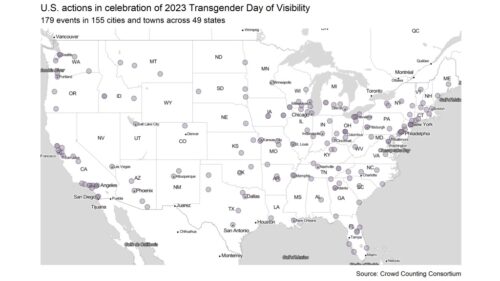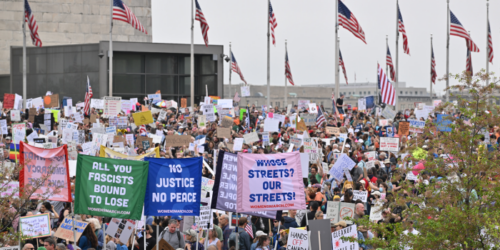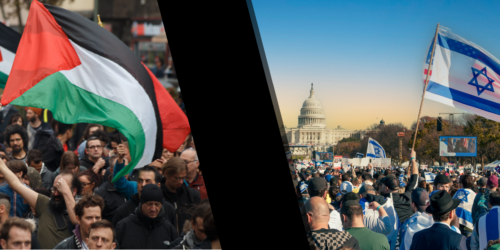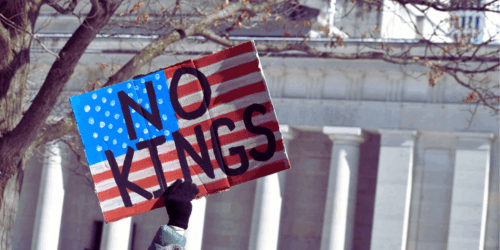Each year since 2009, people around the world have gathered on March 31 (or close to it) to mark International Transgender Day of Visibility (TDOV). In 2023, the U.S. saw nearly 180 TDOV events in 155 different cities and towns across 49 states, according to data collected so far by Crowd Counting Consortium (CCC). That’s up from just 15 events in 2022 and almost certainly the largest and broadest celebration of TDOV in history.

As of this writing on April 2, 2023, we only have information on crowd sizes for 45 of those 179 events. From just those 45, however, we estimate a total crowd size of nearly 8,500, give or take several hundred. The median crowd size for those 45 events was about 100, and several cities — including New York, Philadelphia, San Francisco, and Washington, DC — saw crowds that reportedly approached or exceeded 1,000.
TDOV ballooned in the U.S. in 2023 because of the torrent of anti-trans bills surging through state legislatures this year, and the wave of public harassment and terrorism that has accompanied it. In direct response to those trends, Queer Youth Assemble (QYA) — a youth-led organization formed in 2021 in response to rising anti-LGBTQ+ sentiment and legislative action — put out a call for coordinated national marches and rallies on TDOV with a focus on queer and trans youth autonomy. Nearly 140 of the events CCC has recorded so for TDOV 2023, or about three-quarters of them, were either organized by, or in associaion with, QYA and its list of demands.
Not all of this year’s actions were affiliated with QYA’s call, however. In New York City, for example, Black Trans Femmes in the Arts (BTFA) hosted several celebratory perfomances across multiple boroughs. In Upper Darby, Pennsylvania, UDTJ hosted a flag-raising ceremony for TDOV at the Township Building, as they have done in years past. And in Eugene, Oregon, antifascists organized a vigil and rally under the title Trans Day of Vengeance — the same title used by another group of organizers in the DC metro area who chose to cancel their April 1 event after it became the target of a right-wing media blast that led to a torrent of violent threats.
This year’s historic mobilization for TDOV is part of a broader and still-swelling wave of activism for LGBTQIA+ rights in response to the salvos of reactionary state legislation and right-wing protest and terrorism mentioned above. As noted in a previous blog post and updated in the chart below, this wave really picked up steam in early 2022 after the passage of Florida’s so-called Don’t Say Gay law, but it has kept rolling across the ensuing months. The broad turnout for this year’s TDOV helped produce the highest monthly count of pro-LGBTQ+ actions ever recorded by CCC, which has been tracking U.S. protest activity since January 2017.
In addition to tracking information about things like an event’s date and location and crowd size, CCC tries provide a more complete and nuanced picture of what each event was “about” by recording verbatim claims from participants’ signs and banners and chants as seen in photos or video or reported by journalists in their write-ups. By far the most common claim at the 2023 events from which we’ve seen participant claims so far was “Trans rights are human rights” (26 events), followed closely by “Protect trans kids” (13) and “Protect trans youth” (11), then “Trans lives matter” (5), “Black trans lives matter” (5), “Protect trans lives” (5), “Respect existence or expect resistance” (4), and “Trans liberation now” (3). In total, we have recorded more than 320 unique claims from these events so far, and we expect that count to grow as we see new articles, videos, or social media posts about this year’s actions. Some of my personal favorites from the long tail of claims we’ve seen once or twice so far include “The trans agenda is an average life expectancy”, “Fuck your gender roles”, “Girls will be boys”, “Keep your bills and bans off queer trans bodies”, “More glitter less bitter”, “No more dead trans women”, “Our joy is radical”, “The future is fluid”, “This body is my creation”, and “Stop trans genocide”.
Flags often serve as an important vehicle for political symbolism and expression at protest events, so we record information about those, too. Unsurprisingly, the Trans Pride flag was by far the most common one at this year’s TDOV actions, seen at 38 events so far, followed by the Progress Pride flag (27), Rainbow Pride flag (16), and Nonbinary Pride flag (12). We’ve also recorded one or a few instances of the Bisexual Pride flag (4), Pansexual Pride flag (4), Asexual Pride flag (2), Lesbian Pride flag (2), Straight Ally flag (2), Aromantic Pride flag (1), Genderqueer Pride flag (1), and Intersex Pride flag (1). A few events also saw participants waving American flags, alone or, in one instance, blended with the Rainbow Pride flag. And, finally, we saw one instance each of a blended Rainbow Pride/Gadsden flag, the national flag of Cuba, and a Trans Pride flag with a picture of an alligator above the slogan “Fuck around and find out.” (We use the University of Northern Colorado Gender and Sexuality Resource Center’s guide to pride flags for this task.)









